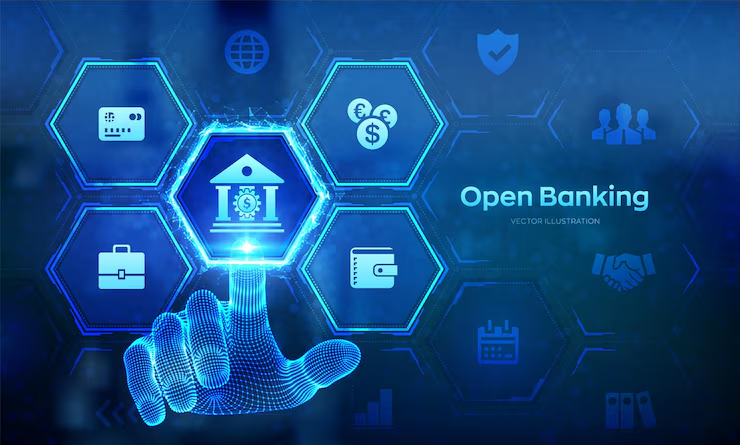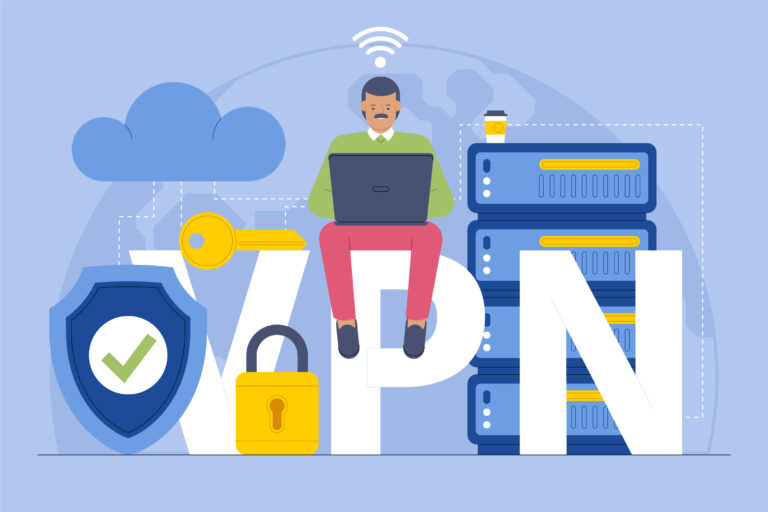Overview
The modern IT services in banking sector are reshaping how financial institutions operate in today’s digital-first world. Traditional brick-and-mortar banks are evolving into hyper-connected financial platforms, driven by the need for real-time transactions, robust cybersecurity, seamless customer experiences, and strict regulatory compliance. Partnering with the right IT provider for banking has become critical for sustaining this transformation.
As financial services become increasingly data-intensive and customer expectations rise, banks must adopt sophisticated IT systems that support their digital ambitions. From mobile banking and fraud detection to core banking infrastructure and compliance monitoring, the role of IT is pivotal. Failing to implement advanced IT services is no longer just a missed opportunity—it creates serious risks to competitiveness, customer trust, and operational continuity.
In this article, we explore the multifaceted role of IT services in banking, highlight real-world examples, discuss evolving trends, and showcase how IT managed service non profits like Infodot empower financial institutions to achieve agility, resilience, and long-term security.
What is IT Services for Banking?
Banking IT services, sometimes called bank IT services, refer to the strategic implementation and management of technology infrastructure, software, and support systems designed to streamline operations, enhance security, and ensure compliance for financial institutions. These services empower banks to deliver seamless customer experiences while maintaining regulatory standards.
Key components of IT services for banking include:
- Management of core banking platforms and applications
- Cybersecurity frameworks and advanced threat detection
- Network infrastructure monitoring and upgrades
- IT helpdesk and end-user support services
- Cloud migration and hybrid infrastructure management
- Regulatory compliance automation
By leveraging specialized banking IT services, financial institutions can reduce operational risks, stay ahead of evolving cyber threats, and ensure long-term business resilience.
Banking IT Services Focus Areas
IT services in banking span a wide spectrum of critical areas, aligning with digital strategy, risk management, and operational efficiency. Modern IT solutions for banks help financial institutions enhance customer experience, stay compliant, and improve overall resilience.
- Core banking software (CBS) and middleware systems
- Customer experience platforms (mobile, web, kiosk)
- Payment gateway integration and fraud detection
- Regulatory reporting and audit readiness
- Business continuity and disaster recovery
- Network performance and data center uptime
Tailored IT solutions for banks that improve security, compliance, and digital transformation
Role of IT Services for Banking
IT services are no longer just back-office support—they are fundamental to delivering banking services, mitigating risk, and sustaining growth. IT support for banks is no longer just back-office assistance—it is fundamental to delivering banking services, mitigating risk, and sustaining growth. Modern IT solutions for banks help financial institutions enhance customer experience, ensure compliance, and strengthen overall resilience.
- Facilitate real-time, omnichannel banking experiences
- Enable digital onboarding and e-KYC compliance
- Detect and prevent fraud with AI and ML models
- Automate compliance reporting and documentation
- Enhance data governance and decision-making
- Scale systems during peak load or transaction spikes
Use Cases of IT Services for Banks
IT support for banks is no longer just back-office assistance, it is fundamental to delivering banking services, mitigating risk, and sustaining growth. Modern IT solutions for banks help financial institutions enhance customer experience, ensure compliance, and strengthen overall resilience.These examples show how managed IT services for banks help in both daily operations and long-term strategy. IT applications are embedded across banking operations. Here are key scenarios where managed IT marketing plays a critical role:
- Multi-factor authentication for login and transactions
- Chatbots for automated customer support
- Blockchain for secure transaction records
- Predictive analytics for loan default risk assessment
- APIs for third-party fintech integration
- Secure cloud backup for core data
Trends in Banking Technology
The future of banking lies in intelligent automation, hyper-personalization, and zero-trust security frameworks.
- AI-powered customer service and sentiment analysis
- RPA for repetitive task automation (e.g., data entry)
- Embedded finance and open banking APIs
- Biometric verification and behavior analytics
- Quantum-proof encryption technologies
- ESG-driven data transparency tools
Managed IT Support for Banking Sector
Banking systems need continuous monitoring, rapid issue resolution, and proactive incident management. IT support for banks are no longer just back-office functions—they are essential to delivering secure, compliant, and customer-centric banking operations.
Banking systems need continuous monitoring, rapid issue resolution, and proactive incident management to minimize downtime and protect sensitive financial data.These examples show how managed IT services for banks help in both daily operations and long-term strategy. IT applications are embedded across banking operations. Here are key scenarios where managed IT services play a critical role:
- Tiered support levels with escalation paths
- SLA-backed response for mission-critical issues
- Remote troubleshooting and software fixes
- Scheduled patching for OS and applications
- Device and access inventory management
- IT asset lifecycle documentation
Benefits of IT Support for Banking Sector
From branch operations to digital portals, chartered accountants it service improves speed, accuracy, and resilience.
- Lower downtime improves transaction completion rates
- Faster onboarding of customers and services
- Stronger cybersecurity posture across endpoints
- Simplified compliance management and audit trails
- Reduced IT overhead and operational costs
- Improved service experience for customers
Future of IT for Banking Operation
As banks evolve into technology-first service providers, IT must support real-time analytics, open architecture, and global scalability. IT services in banking and modern IT solutions banking are the backbone of today’s financial institutions.
As banks evolve into technology-first service providers, IT must support real-time analytics, open architecture, and global scalability ensuring security, compliance, and customer trust at every step. This is where managed IT services for banks and dedicated IT support for banks play a crucial role in aligning technology with both daily operations and long-term growth.
- AI ops for predictive maintenance and issue detection
- Hybrid cloud for flexible application hosting
- Blockchain for smart contract execution
- 5G connectivity for branchless banking expansion
- Cross-border transaction automation
- Cloud-native development for agile rollouts
Application of IT for Banking Operations
IT is deeply embedded in everyday banking functions, ensuring consistent service and operational visibility.
- ATM network monitoring and software updates
- Remote teller station IT support
- Transaction processing and reconciliation tools
- Customer data analytics for cross-selling
- Integration of credit scoring and fraud analytics
- Business process management (BPM) platforms
Digital Transformation in Retail Banking
Retail banks use IT to drive personalization, efficiency, and customer delight.
- Personalized product recommendations via analytics
- Real-time mobile alerts for transactions and limits
- Video KYC and digital documentation
- Self-service kiosks and tablet banking
- Mobile-first onboarding and loan applications
- Unified view of customer across products
Cybersecurity and Risk Management in Banking
Banking is among the top sectors targeted by cybercriminals, making cybersecurity a critical pillar of IT services in the banking sector. Robust IT security is non-negotiable to protect sensitive customer data, ensure regulatory compliance, and maintain trust.
- Intrusion detection and prevention systems (IDPS)
- Endpoint protection for staff devices
- Ransomware defense and zero-trust security
- Compliance with DPDP, GDPR, and RBI guidelines
- Penetration testing and white-hat audits
- Data masking and anonymization protocols
Cloud Migration Strategy for Banks
Cloud services offer scalability, cost-efficiency, and agility. IT MSPs ensure secure, compliant migrations.
- Cloud readiness assessment and roadmap
- Hybrid cloud setup with banking-grade SLAs
- Secure migration of customer data and apps
- Disaster recovery in multi-cloud environments
- Ongoing cloud cost optimization
- SaaS and PaaS integration
Data Analytics and Business Intelligence
Banks are data-rich but insight-poor. IT enables transformation into insight-driven enterprises.
- Centralized data lakes with structured pipelines
- Real-time dashboards for branch managers
- Credit scoring models using ML
- Predictive analytics for churn and profitability
- Visual analytics for boardroom reporting
- Regulatory reporting with drill-down capability
Omnichannel Banking Experience Support
Customers expect consistency across mobile, web, in-branch, and call center interactions.
- Unified CRM with journey mapping
- Centralized customer data repository
- Channel analytics and sentiment analysis
- Secure mobile banking app development
- AI-based chat support across channels
- Integration of voice, video, and text service
Rely on Infodot Banking IT Services
Infodot specializes in designing banking-specific IT services environments that ensure regulatory alignment, maximum uptime, and customer trust.
- 24/7 managed service desk for bank staff
- Core banking application support and patching
- Security audits aligned to RBI/SEBI norms
- Data center monitoring and failover testing
- Email, VoIP, and CRM system integration
- Regulatory change management IT consulting
Tailored Bank IT Solutions
Every financial institution has unique operational challenges. Infodot’s bank IT services and customized bank IT solutions are designed to improve efficiency, strengthen security, and help banks adapt quickly to evolving regulations and customer needs.
How Infodot Supports Banking Sector in Building a Robust IT Infrastructure
Infodot delivers holistic banking IT infrastructure services tailored for financial institutions, balancing innovation with regulatory compliance.
- Custom SLA-based managed IT plans
- 24/7 network and infrastructure monitoring
- Application performance and patch management
- User access and role governance
- Endpoint detection and response setup
- Audit trail logging and regulatory documentation
Real-World Examples: How a Robust IT Infrastructure Improves Bank’s Operation
Case Study 1: A cooperative bank reduced ATM downtime by 60% after real-time monitoring and remote patching systems were implemented.
Case Study 2: A private bank avoided a regulatory fine by using IT compliance documentation and audit support service before a scheduled inspection.
Conclusion
The banking industry stands at a pivotal point where its evolution into a digitally native service model is not a matter of choice, but of survival. Customers demand seamless, secure, and intelligent banking. Regulators demand transparency, traceability, and compliance.
This can only be achieved with a robust IT foundation. Managed IT services bring banking institutions the technical depth, agility, and risk protection they need to innovate while safeguarding operational integrity.
Infodot combines domain knowledge, cutting-edge infrastructure, and a service-first mindset to empower banks with technology that supports their mission. Partnering with the right IT provider means investing in the future of banking itself.





